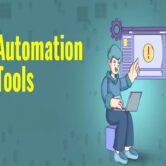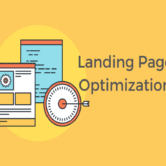
Detail the process of creating optimized content for websites
Introduction
Creating optimized content for websites is a strategic process that blends creativity, user intent, and search engine best practices. The goal is to develop content that not only informs and engages the audience but also ranks well in search engines and drives measurable business outcomes. Optimization goes beyond keywords—it’s about structure, clarity, relevance, and value. When executed properly, optimized content enhances visibility, increases traffic, and improves user experience.
Understanding the Target Audience
The first step in content optimization is knowing who the audience is. Understanding their demographics, interests, challenges, and search behavior helps craft messages that resonate. This ensures content speaks directly to user needs and expectations.
Conducting Keyword Research
Keywords are the foundation of SEO-driven content. Tools like Google Keyword Planner, SEMrush, or Ahrefs help identify search terms relevant to your topic and audience. Targeting the right mix of short-tail and long-tail keywords ensures your content aligns with user search intent.
Defining Clear Content Goals
Every piece of content should have a purpose—whether it’s to inform, convert, entertain, or educate. Setting clear objectives helps shape the structure, tone, and call-to-action. Goals should align with broader business strategies like lead generation or brand visibility.
Creating Compelling and Valuable Content
Optimized content must provide genuine value. This means answering questions, offering insights, solving problems, or guiding decisions. Well-researched, original, and high-quality content increases engagement and positions the website as a credible source.
Structuring for Readability and SEO
Effective content uses headers (H1, H2, H3), bullet points, and short paragraphs for easy scanning. Strategic placement of keywords in headings, introduction, and conclusion boosts SEO. Proper formatting also improves user experience across all devices.
Optimizing On-Page Elements
On-page SEO includes meta titles, meta descriptions, image alt tags, and internal linking. These elements help search engines understand the page and improve visibility. Descriptive URLs, structured data, and canonical tags also contribute to content optimization.
Incorporating Visuals and Multimedia
Images, infographics, videos, and charts enhance content appeal and break up text-heavy pages. Optimizing media with compressed file sizes, descriptive alt text, and appropriate formatting ensures accessibility and fast loading speeds.
Adding Clear and Strategic CTAs
Calls-to-action guide users toward desired behaviors like signing up, purchasing, or contacting. Effective CTAs are prominently placed, action-oriented, and aligned with the content’s purpose, turning passive readers into active participants.
Reviewing and Editing for Quality
Proofreading and editing are essential to ensure accuracy, grammar, tone consistency, and brand voice. Clear, error-free content builds trust and reflects professionalism, while eliminating any ambiguity or confusion.
Publishing and Promoting the Content
Once published, content must be promoted via social media, email newsletters, and other channels to reach a wider audience. Sharing content increases visibility, generates backlinks, and encourages engagement across platforms.
Measuring and Refining Performance
After publication, analytics tools track how content performs—traffic, bounce rate, time on page, and conversions. Insights from these metrics help refine future content and update existing pages for better performance over time.
Conclusion
Creating optimized content is a dynamic and multi-step process that involves planning, execution, and refinement. It’s about delivering meaningful experiences to users while satisfying search engine algorithms. By following a structured approach, businesses can produce content that attracts, engages, and converts—turning their websites into powerful digital assets.
Hashtags
#contentoptimization #seo #webcontent #digitalmarketing #keywordresearch #contentstrategy #onlinemarketing #seooptimizedcontent #uxwriting #webwriting #metadescriptions #websitecontent #readability #ctas #contentmarketing #searchengineoptimization #seo2025 #contentstructure #digitalcontentcreation #blogoptimization #contentgoals #usability #webcontentcreation #webcopywriting #seowritingtips





